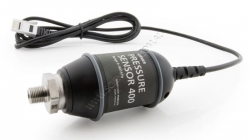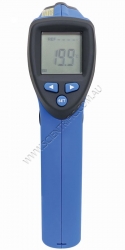109 low relevance results shown for 'cell'. Prev |1|2|3|4|5 | Next | View 100 per page
Showing low relevance matches only. Return to normal search results
Cells - Cells are the basic units of living things and have specialised structures and functions ACSSU150 Year 8 Biological Sciences
Organ Systems - Multi-cellular organisms contain systems of organs that carry out specialised functions that enable them to survive and reproduce ACSSU175 Year 9 Biological Sciences
Organ Systems - Multi-cellular organisms rely on coordinated and interdependent internal systems to respond to changes to their environment ACSBL045 Year 11 Cells and multicellular organism
Cells as the basis of life - The cell membrane separates the cell from its surroundings and controls the exchange of materials, including gases, nutrients and wastes, between the cell and its environment ACSBL046 Year 11 Cells and multicellular organism
Cells as the basis of life - Movement of materials across membranes occurs via diffusion, osmosis, active transport and/or endocytosis ACSBL047 Year 11 Cells and multicellular organism
Cells as the basis of life - Factors that affect exchange of materials across membranes include the surface-area-to-volume ratio of the cell, concentration gradients, and the physical and chemical nature of the materials being exchanged ACSBL118 Year 12 Maintaining the internal environment
Infectious disease - Pathogens have adaptations that facilitate their entry into cells and tissues and their transmission between hosts; transmission occurs by various mechanisms including through direct contact, contact with body fluids, and via contaminated food, water or d ACSCH103 Year 12 Equilibrium acids and redox reactions
Oxidation and reduction - A range of reactions, including displacement reactions of metals, combustion, corrosion, and electrochemical processes, can be modelled as redox reactions involving oxidation of one substance and reduction of another substance ACSCH104 Year 12 Equilibrium acids and redox reactions
Oxidation and reduction - Oxidation can be modelled as the loss of electrons from a chemical species, and reduction can be modelled as the gain of electrons by a chemical species; these processes can be represented using half equations ACSCH106 Year 12 Equilibrium acids and redox reactions
Oxidation and reduction - The relative strength of oxidising and reducing agents can be determined by comparing standard electrode potentials ACSCH107 Year 12 Equilibrium acids and redox reactions
Oxidation and reduction - Electrochemical cells, including galvanic and electrolytic cells, consist of oxidation and reduction half reactions connected via an external circuit that allows electrons to move from the anode (oxidation reaction) to the cathode (reduction reaction) ACSCH108 Year 12 Equilibrium acids and redox reactions
Oxidation and reduction - Galvanic cells, including fuel cells, generate an electrical potential difference from a spontaneous redox reaction; they can be represented as cell diagrams including anode and cathode halfequations ACSCH110 Year 12 Equilibrium acids and redox reactions
Oxidation and reduction - Cell potentials at standard conditions can be calculated from standard electrode potentials; these values can be used to compare cells constructed from different materials ACSBL052 Year 11 Biodiversity and the interconnectedness of life
Ecosystem dynamics - Photosynthesis is a biochemical process that in plant cells occurs in the chloroplast and that uses light energy to organic compounds; the overall process can be represented as a balanced chemical equation ACSBL053 Year 11 Biodiversity and the interconnectedness of life
Ecosystem dynamics - Cellular respiration is a biochemical process that occurs in different locations in the cytosol and mitochondria and metabolises organic compounds, aerobically or anaerobically, to release useable energy in the form of ATP; the overall process can be repr









109 low relevance results shown for 'cell'. Prev |1|2|3|4|5 | Next | View 100 per page
Showing low relevance matches only. Return to normal search results
Curriculum resources related to 'cell'
ACSSU149 Year 8 Biological SciencesCells - Cells are the basic units of living things and have specialised structures and functions ACSSU150 Year 8 Biological Sciences
Organ Systems - Multi-cellular organisms contain systems of organs that carry out specialised functions that enable them to survive and reproduce ACSSU175 Year 9 Biological Sciences
Organ Systems - Multi-cellular organisms rely on coordinated and interdependent internal systems to respond to changes to their environment ACSBL045 Year 11 Cells and multicellular organism
Cells as the basis of life - The cell membrane separates the cell from its surroundings and controls the exchange of materials, including gases, nutrients and wastes, between the cell and its environment ACSBL046 Year 11 Cells and multicellular organism
Cells as the basis of life - Movement of materials across membranes occurs via diffusion, osmosis, active transport and/or endocytosis ACSBL047 Year 11 Cells and multicellular organism
Cells as the basis of life - Factors that affect exchange of materials across membranes include the surface-area-to-volume ratio of the cell, concentration gradients, and the physical and chemical nature of the materials being exchanged ACSBL118 Year 12 Maintaining the internal environment
Infectious disease - Pathogens have adaptations that facilitate their entry into cells and tissues and their transmission between hosts; transmission occurs by various mechanisms including through direct contact, contact with body fluids, and via contaminated food, water or d ACSCH103 Year 12 Equilibrium acids and redox reactions
Oxidation and reduction - A range of reactions, including displacement reactions of metals, combustion, corrosion, and electrochemical processes, can be modelled as redox reactions involving oxidation of one substance and reduction of another substance ACSCH104 Year 12 Equilibrium acids and redox reactions
Oxidation and reduction - Oxidation can be modelled as the loss of electrons from a chemical species, and reduction can be modelled as the gain of electrons by a chemical species; these processes can be represented using half equations ACSCH106 Year 12 Equilibrium acids and redox reactions
Oxidation and reduction - The relative strength of oxidising and reducing agents can be determined by comparing standard electrode potentials ACSCH107 Year 12 Equilibrium acids and redox reactions
Oxidation and reduction - Electrochemical cells, including galvanic and electrolytic cells, consist of oxidation and reduction half reactions connected via an external circuit that allows electrons to move from the anode (oxidation reaction) to the cathode (reduction reaction) ACSCH108 Year 12 Equilibrium acids and redox reactions
Oxidation and reduction - Galvanic cells, including fuel cells, generate an electrical potential difference from a spontaneous redox reaction; they can be represented as cell diagrams including anode and cathode halfequations ACSCH110 Year 12 Equilibrium acids and redox reactions
Oxidation and reduction - Cell potentials at standard conditions can be calculated from standard electrode potentials; these values can be used to compare cells constructed from different materials ACSBL052 Year 11 Biodiversity and the interconnectedness of life
Ecosystem dynamics - Photosynthesis is a biochemical process that in plant cells occurs in the chloroplast and that uses light energy to organic compounds; the overall process can be represented as a balanced chemical equation ACSBL053 Year 11 Biodiversity and the interconnectedness of life
Ecosystem dynamics - Cellular respiration is a biochemical process that occurs in different locations in the cytosol and mitochondria and metabolises organic compounds, aerobically or anaerobically, to release useable energy in the form of ATP; the overall process can be repr
Products related to 'cell'

IEC Electricity Kit Multimeter AC DC with Capacitance
A very useful and low cost AC and DC multimeter. Power ON/OFF button with "Auto Power Off" feature to conserve battery. Uses A standard 9V battery.
Excellent ranges for both AC and DC volts and amps. Large amps range to 20 amps. Diode checking, continuity beeper, capa...
Order code: PA1764-220

Vernier Pressure Sensor 400
VERNIER PRESSURE SENSOR 400
The Vernier Pressure Sensor 400 is the optimal sensor for conducting physical and analytical chemistry experiments such as approximating the adiabatic expansion of a gas, Charles’ law experiments and ideal gas law investigations. It measures ab...
Order code: PS400-BTA

Mini Windmill Class Pack
Replaced by SC1165-10 and SC1165-20
Build a Mini Windmill to learn about how the wind can do work! Students use basic materials like paper plates and straws to construct a device that spins in the wind in order to lift weight. The Mini Windmill kit is an excellent way to help young students build a foundation to un...
Order code: RL-MINIWX

Infrared Non Contact Thermometer
INFRARED NON CONTACT THERMOMETER.
This handheld IR thermometer has a laser pointer guide and excellent accuracy between -50°C and 580°C. The LCD indicates the measured reading & emissivity value. A new temperature reference mode allows quick verification of ‘within range’...
Order code: SC2235

Transmission Grating 300 lines/mm 25mm sq
This UK made high quality 300 lines per mm grating has a high resolving power making it suitable for use in high quality student spectrometers. Instructions for use in a student spectrometer are included.
This grating is particularly recommended as it enables measurements to be...
Order code: SC3632

Infrared Thermometer
INFRARED THERMOMETER. This handheld IR thermometer has a laser guide and excellent accuracy between -50°C and 380°C. The bright backlit LCD shows the scanned temperature, the backlight status (on/off), the laser guide status (on/off) and a low battery warning.
Features:...
Order code: SC4510

Tyvek® 500 Xpert Coverall - Medium (PPE)
DuPont™ Tyvek® 500 Xpert/DuPont™ Tyvek® 500 Xpert hooded coverall available in white, in sizes M to XL Robust yet lightweight (
Order code: SC4940
| Purchase QTY: (Each) | 1+ |
|---|---|
| Scientrific's price | $14.90 |
| CLICK FOR QTY PRICING | |
| Prices exclude GST and freight | |

Battery Tester AAA AA C D 9V Lithium
Take out the guesswork when trying to ascertain if equipment has failed or if the old and sometimes brand new batteries are in fact the problem.
This versatile digital battery checker will test all common batteries including button cells, AA, AAA, C, D and 9V batteries. Can als...
Order code: SC5455

Nalgene Test Tube Rack 13mm Blue
This Nalgene branded full-size Unwire™ test tube rack securely holds a full load of 13mm test tubes or centrifuge tubes.
Size: 200 x 102 x 57 mm (LxWxH).
Colour: Blue
Features:
6 x 12 array of 13mm holes.
The ResMer™ manufacturing technology allows this rack t...
Order code: 5970-0313
109 low relevance results shown for 'cell'. Prev |1|2|3|4|5 | Next | View 100 per page



 ,
,